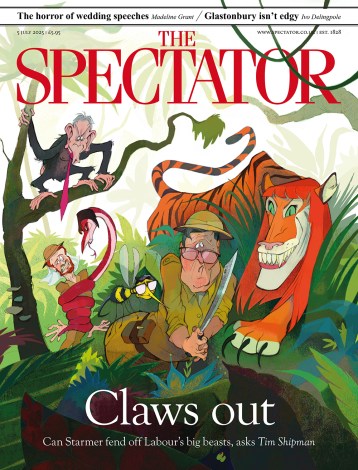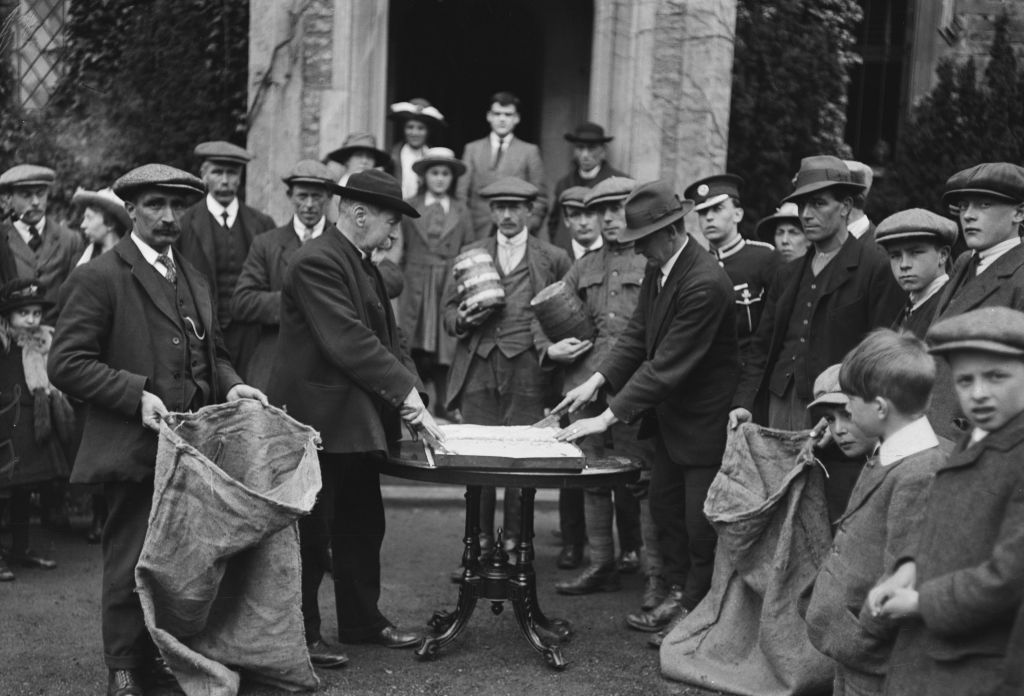If you get up early enough on Easter morning, according to old English folklore, you might be lucky enough to see the sun dancing in the sky as it rises, rejoicing at the resurrection of Christ – although tradition also records that the devil usually manages to put a hill in front of the dancing sun to stop people seeing it.
Easter is one of the richest periods of the calendar for traditional English folk customs. A few are still well known and even recognised by supermarkets, such as the eating of hot cross buns and simnel cake. But many other customs are either confined to one location or are long forgotten, replaced by the generic, confected ‘fakelore’ of the Easter Bunny and egg hunts.
The belief originally associated with the hot cross bun – that one baked on Good Friday would remain fresh throughout the year, and protect homes from fire – has largely vanished
Like other fasts and vigils in the liturgical calendar, Good Friday (which was known to the English as ‘Long Friday’ until around 1290) is the focus of many popular customs, perhaps because people needed to find ways to entertain themselves when forbidden from working. Even after the Reformation, Good Friday and Easter Monday remained holidays.
Some of the more pious Good Friday traditions involved the distribution of traditional ‘doles’ (gifts to the poor). More raucous events also took place, such as the ritual burning of an effigy of Judas Iscariot (a sort of Guy Fawkes’ night in spring) in Liverpool and ‘Workington Football’ in Cumberland, an intensely violent game without clear rules or boundaries in which players were often seriously injured and sometimes drowned in local rivers and ponds.
Dominating the folklore of Good Friday is the hot cross bun – ironically, perhaps, for a day of fasting. The belief originally associated with the bun – that one baked on Good Friday would remain fresh throughout the year, and protect homes from fire – has largely vanished. This latter belief may have been a post-Reformation replacement for earlier superstitions about the consecrated host – also marked with a cross – as a protector against housefires. Likewise, simnel cake (although now equally associated with Mothering Sunday) retains some of its Easter significance, although the importance of topping the cake with 12 balls of marzipan and being sure to make and eat a thirteenth – to symbolise the suicide of Judas – may be fading.
One tradition that does not have deep religious roots is the Easter egg. In all likelihood, the connection between Easter and eggs has more to do with the fact that eggs could be eaten again after Lent (and were widely available in Spring) than with alleged pagan antecedents or tortured theological analogies between an egg and Christ’s tomb.
The most widespread traditional Easter customs associated with eggs were known as ‘Pace-Egging’, from the alternative word for Easter, Pasch, which existed in Old and Middle English and still survives in the adjective ‘paschal’. Pace-Egging covered a wide range of customs and could range from decorating eggs to ritualised door-to-door begging for eggs. Games involved rolling eggs while trying not to break them. There were also Pace-Egg plays, traditional dramas similar to mummers’ plays involving ritualised combat between St George and ‘Bold Slasher’ – a swaggering knight who challenged George to a duel.
Pace-Egging customs were strongest in Northumberland, Westmorland and Lancashire, but in the late 19th century egg decorating began to develop as a refined art-form and spread around the country. John Cadbury could not resist cashing in on this custom when he put the world’s first chocolate Easter egg on sale in 1875 – a novelty that Cadbury could not possibly have imagined would one day displace virtually every other English Easter custom.
Spontaneous, unauthorised fairs also sprang up on Easter Sunday, such as Greenwich fair in the 18th century, as hawkers and vendors saw an opportunity to take advantage of people’s free time on a holiday. For the same reason, Easter Monday became associated with traditional games and ‘scrabbling’ customs, when pennies, sweets, oranges or pies were thrown into crowds who would ‘scrabble’ to pick up as many as they could. Hare hunts were also traditional on Easter Monday: a reminder that hares rather than rabbits were once associated with Easter, and for reasons rather more bloodthirsty than twee.
Judging from the appearance of Easter gonks (a kind of Nordic gnome) in shops in the last few years and the popularity of ‘Easter decorations’ on houses and even ‘Easter trees’ since the lockdown of 2020, our Easter customs continue to evolve. I think that they lack some of the regional colour and distinctiveness of our former traditions. Still, even with the modern chocolate egg, you can hear the dim echo of medieval relief at the end of the long fast of Lent.







Comments